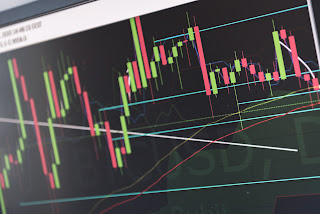Trading, A Beginner's Guide to Navigating the Financial Markets
Introduction to Trading:-
Begin by providing a general overview of what trading is, how important it is in the financial markets, and the many types of trading (such as trading in stocks, foreign exchange, commodities, and cryptocurrencies).
1. Types of Traders:-
Discuss the many kinds of traders, including day traders, swing traders, and long-term investors, highlighting their approaches, time horizons, and risk tolerance.
2. Understanding Market Analysis:-
Explain the fundamental analysis and technical analysis, the two primary types of market analysis. Give examples and a description of how each is used to make trading decisions.
3. Risk management:-
Make sure to emphasize how crucial risk management is in trading. Talk about ideas including diversification, stop-loss orders, and position sizing.
4. Trading Psychology:-
Learn about the psychological components of trading, such as how emotions affect our decision-making, how to cope with stress, and how to remain disciplined.
5. Trading Platform and Tool:-
Introduce the most well-known trading platforms and the tools that traders can use, including charting software, news feeds, and trading bots.
6. Candlestick Pattern:-
Explain some fundamental candlestick patterns that are employed in technical analysis, such as the doji, hammer, and engulfing patterns, and how they can be used to predict future price changes.
7. Support and Resistance:-
Describe the idea of support and resistance levels and how traders use them to decide when to enter and quit a transaction.
8. Trend Following and Reversal Strategy:-
Introduce trading methods that use moving averages, MACD, and RSI indicators, as well as trend-following and reversal tactics.
9. Trading Terminology:-
Give a glossary of terminology used frequently in trading together with their definitions to help newcomers learn the language of trading.
10. Backtesting and Paper Trading:-
Explain the value of backtesting trading methods and using paper trading accounts to simulate real trading without risking real money.
11. Market order vs. Limit order:-
12. Types Of Trading Chart:-
Discuss various trading chart formats and how they convey price data, including line charts, bar charts, and candlestick charts.
13. Economics Indicator and Events:-
Introduce important economic data and events that may have an impact on the financial markets, such as the GDP, interest rates, and central bank statements.
14. Trading Style and Personalities:-
Trading Styles and Personalities: Whether it's day trading, swing trading, or long-term investment, help readers understand how to pick a trading style that fits their personality and goals.
How do I start trading?
How to Start Online Trading in India in Four Easy Steps
- Select a web-based broker. Selecting an online broker is the first step in beginning online trading in India.
- Open a trading and demat account.
- To add money, sign in to your demat/trading account.
- View stock information to get started trading.
- Make a self-evaluation.
- Set Up Enough Capital.
- Recognize the markets.
- Recognize securities.
- Create a trading plan.
- Integrate your plan and strategy.
- Exercise sound money management.
- Examine Brokerage Fees.
Trading on Stock Market, Trading stocks is a great way to get started from home. To run the firm, neither significant financial resources nor a large storage facility are required. The most recent developments in marketing strategies are the only knowledge you need to succeed in business.
What trading approach is most effective?
- Trading Technique No. 1: Buy and Hold,
- For those who invest in equities or other assets with a track record of making gradual but steady returns (such mutual funds or index funds), this is one of the most well-liked trading techniques.
Trading: Is it good or bad?
Although it's common to think of trading as having a high entry barrier, if you're persistent and have drive, you can make a life trading (even with little to no money). Trading might lead to a full-time profession, a part-time career, or simply an additional source of money.
Is trading profitable?
Trading has the potential to bring in thousands, lakhs, or even more money. The following factors are crucial to intraday profits: How much money do you invest each day in the markets? How much risk will you accept while placing Order?
Does trading resemble gambling?
Day traders use market patterns, price fluctuations, and historical performance to inform their strategies, whereas gamblers play the odds that are available. In order to choose which stocks to purchase or sell and how much to invest, traders frequently employ sophisticated analytical tools and real-time market updates.







0 Comments
If you have any doubt, please let me know